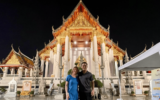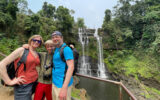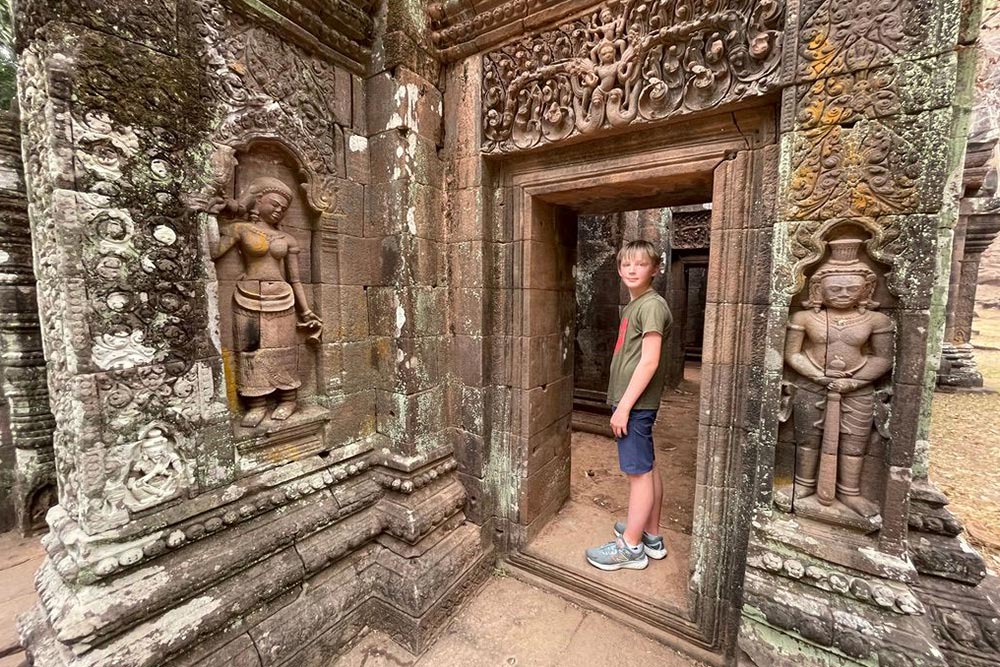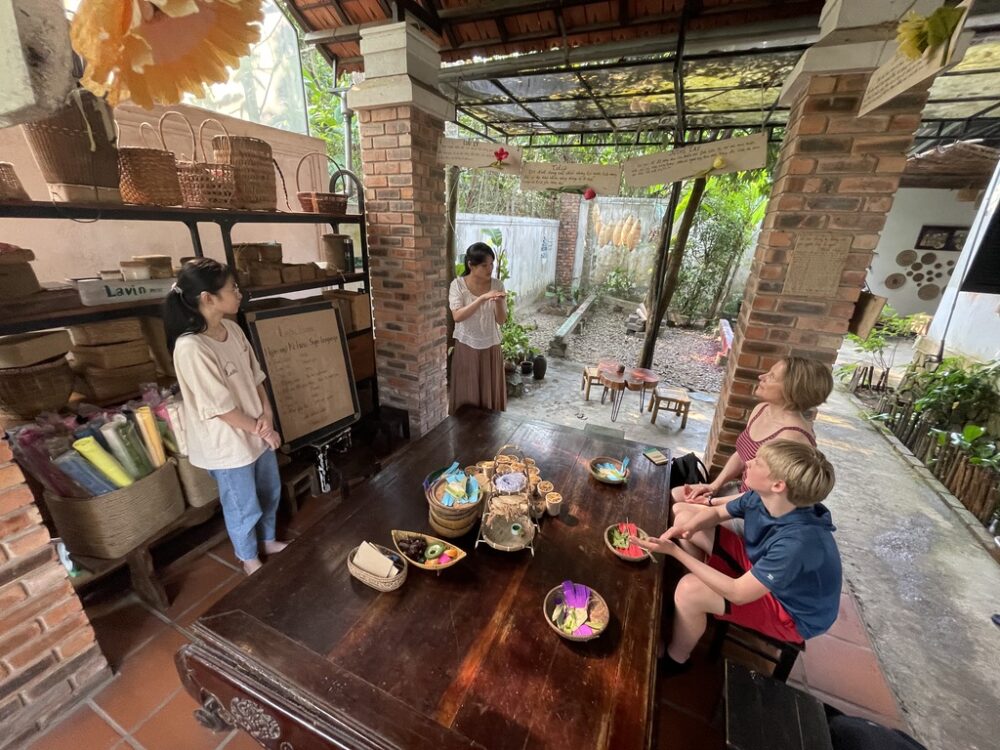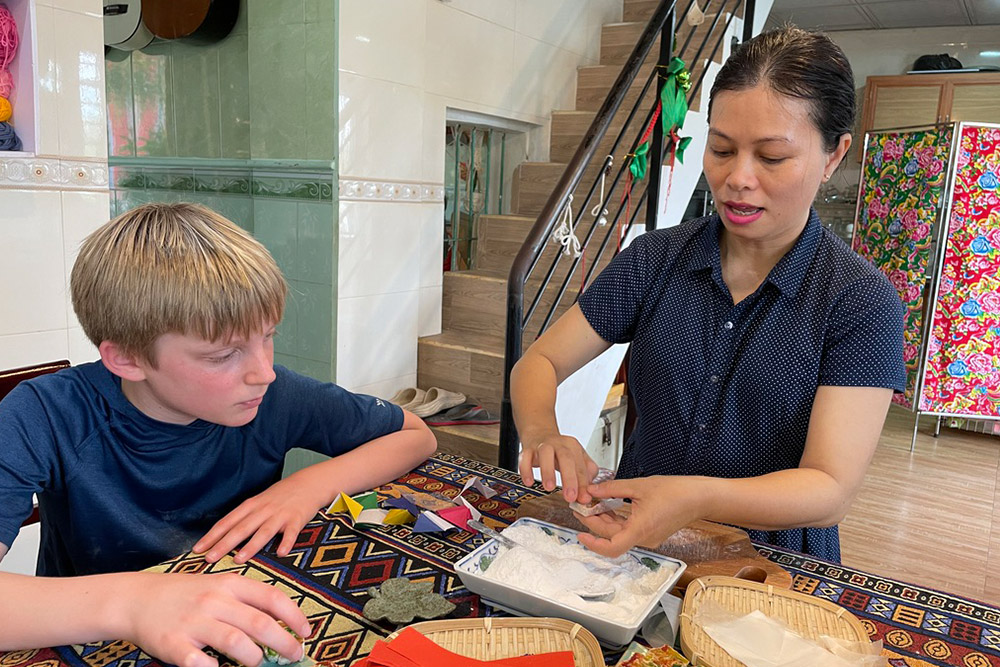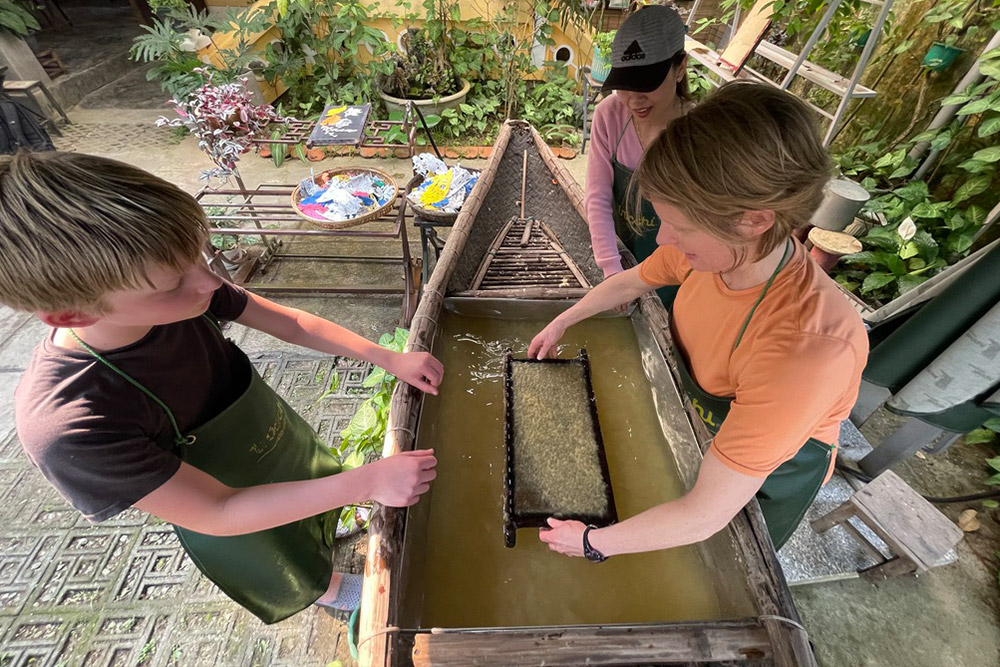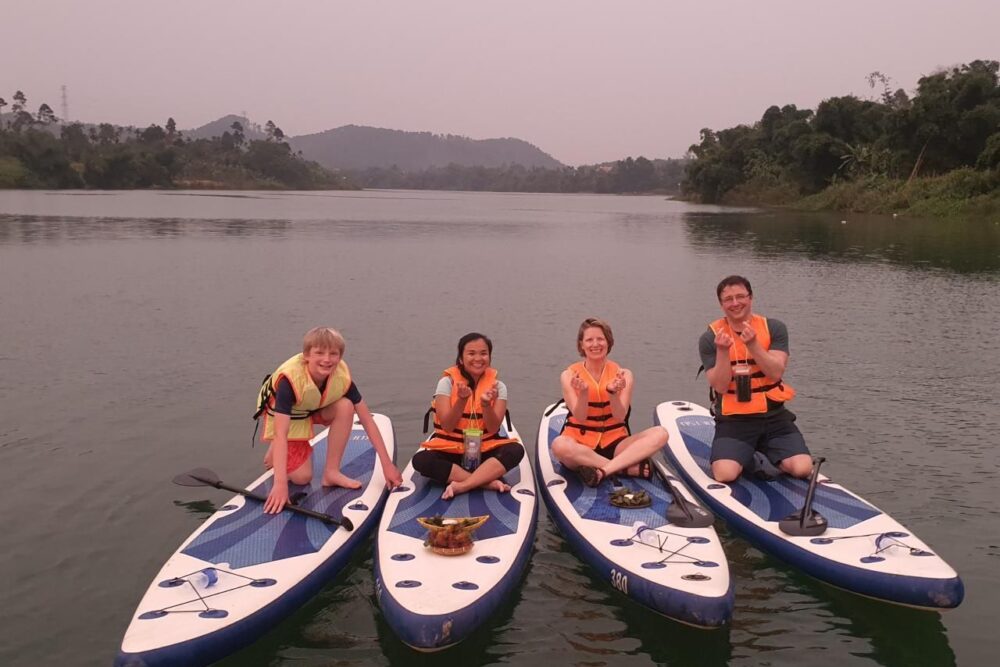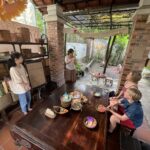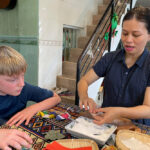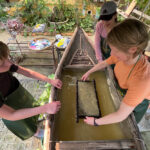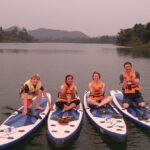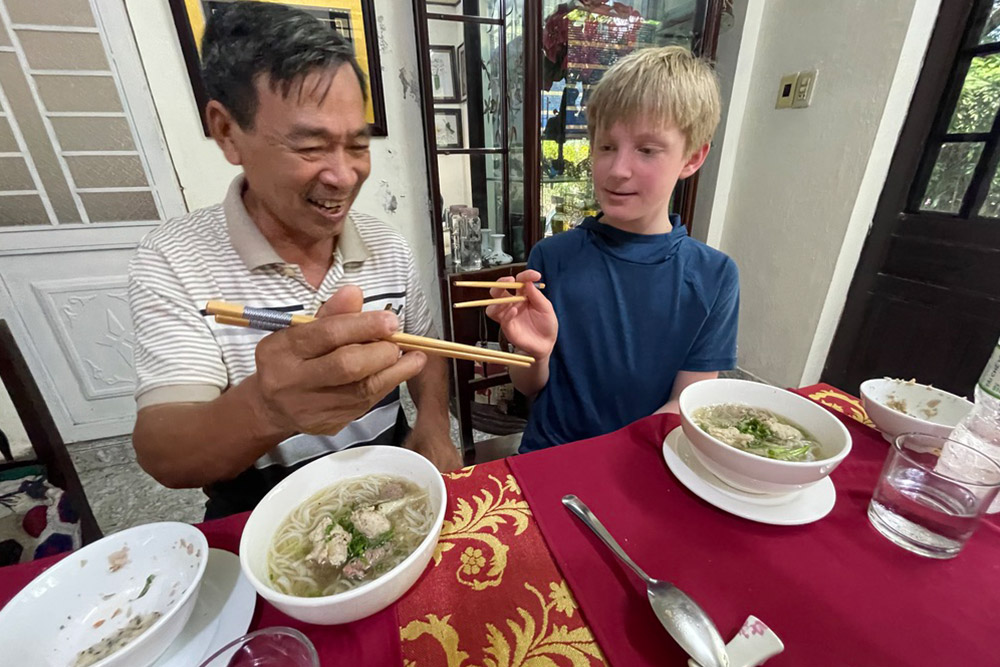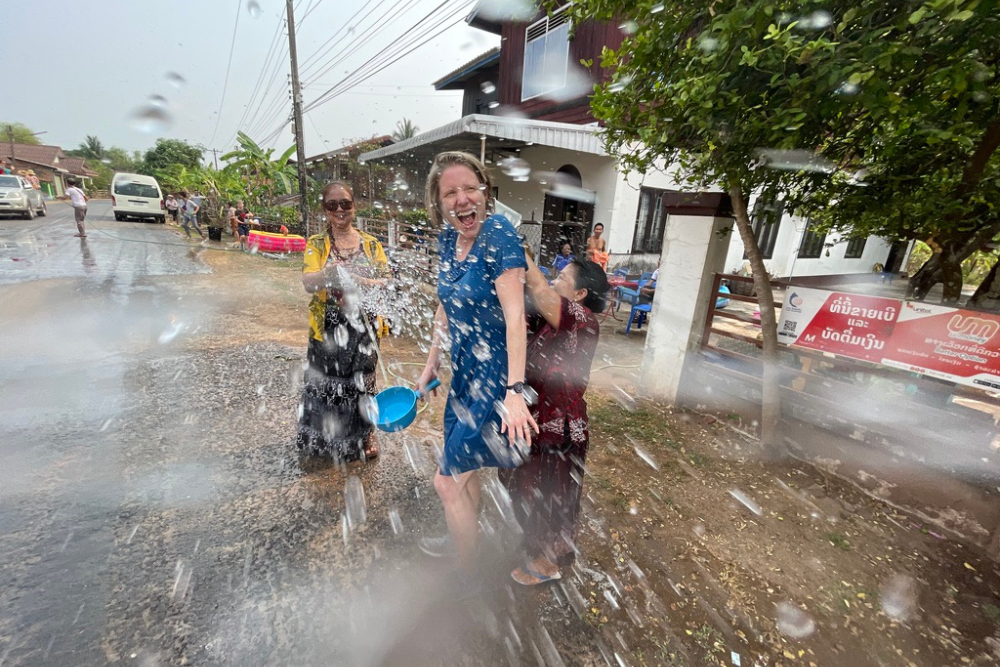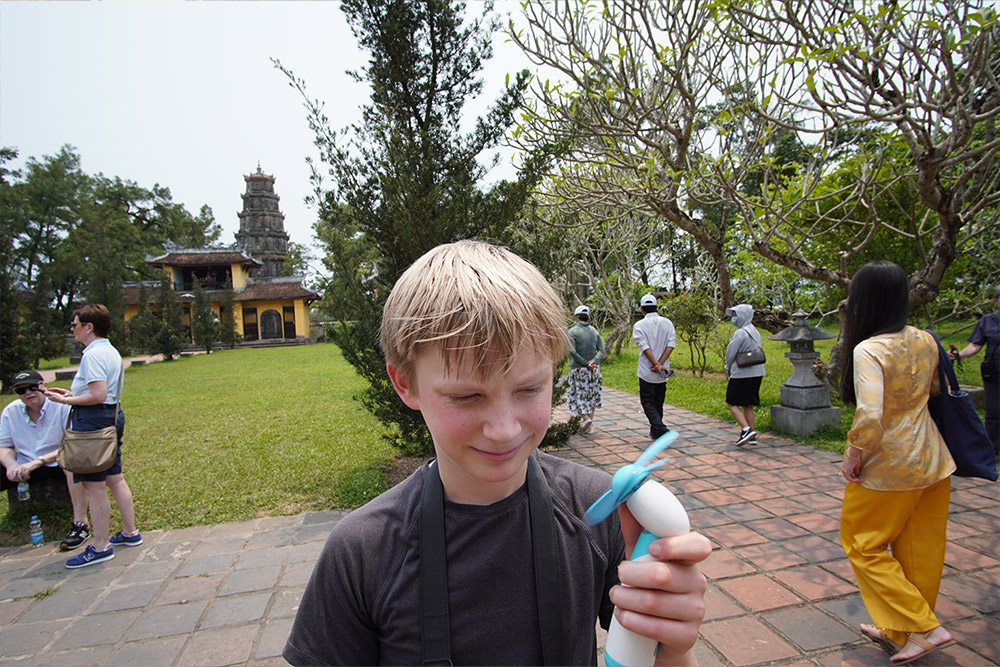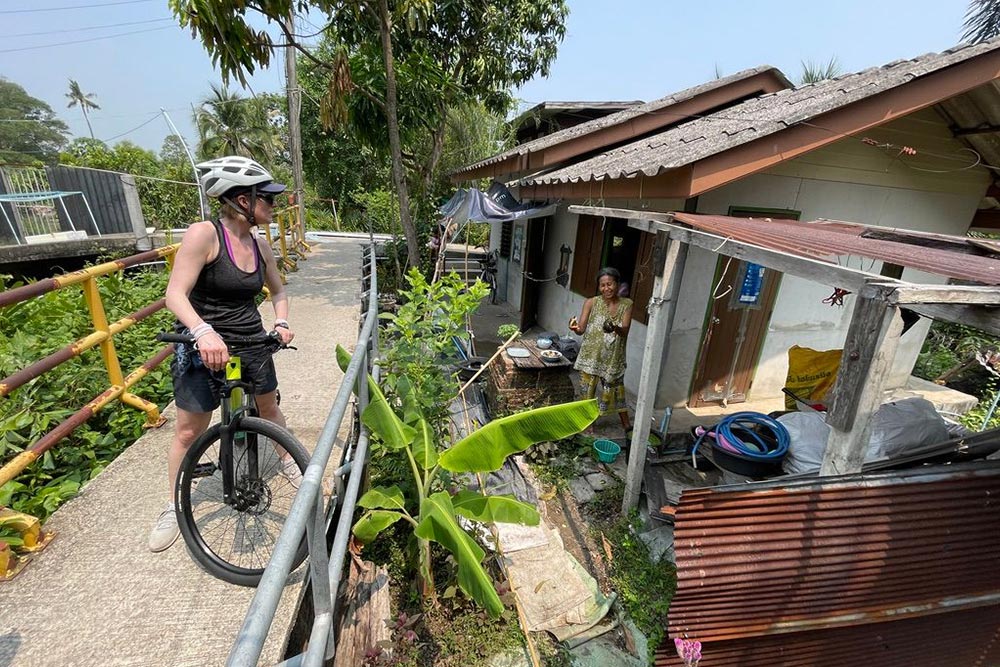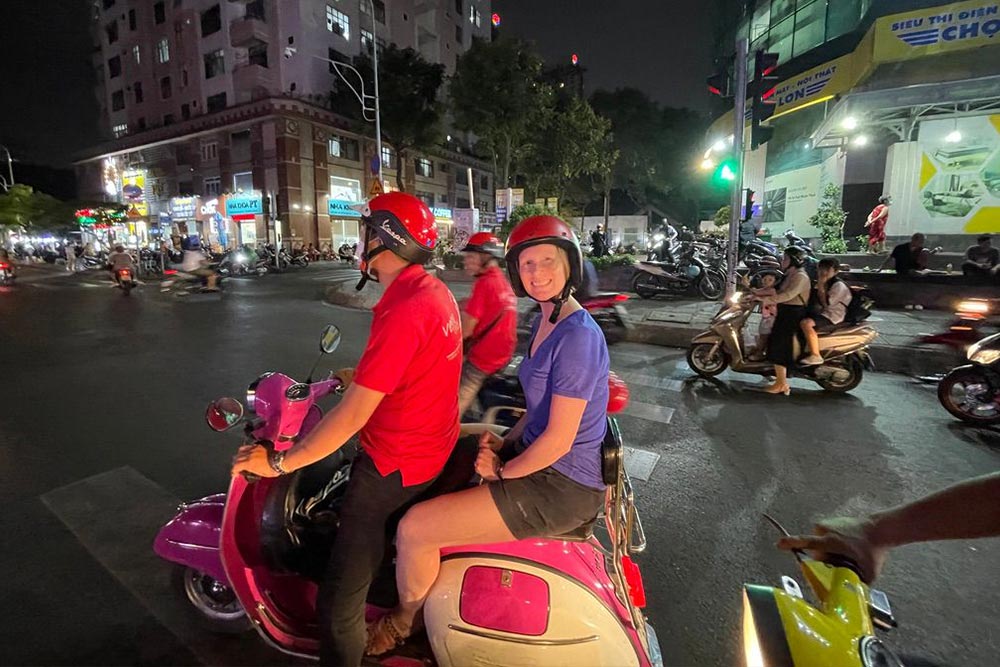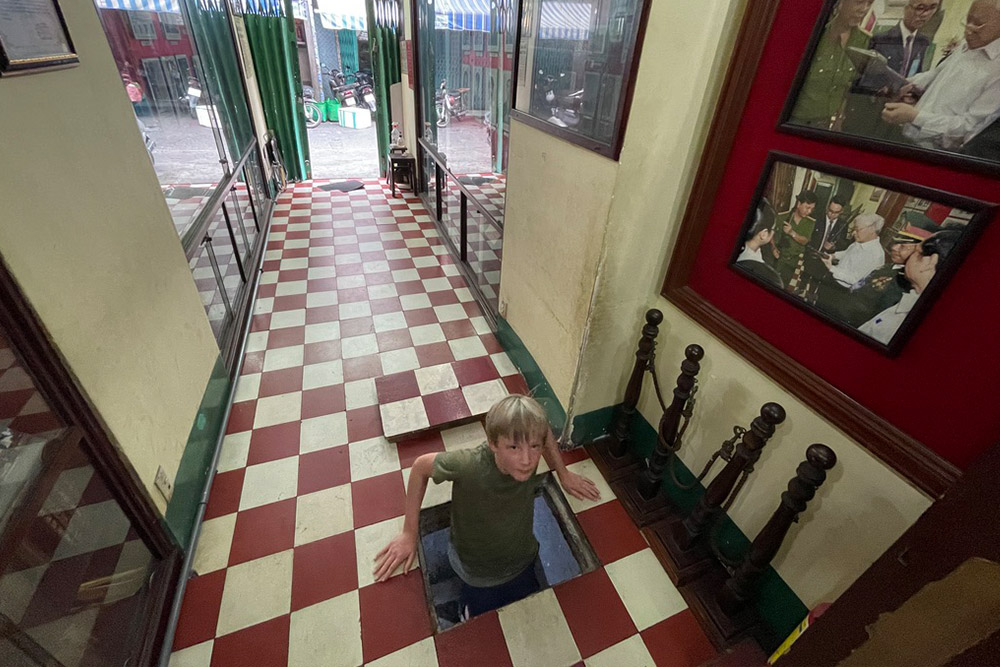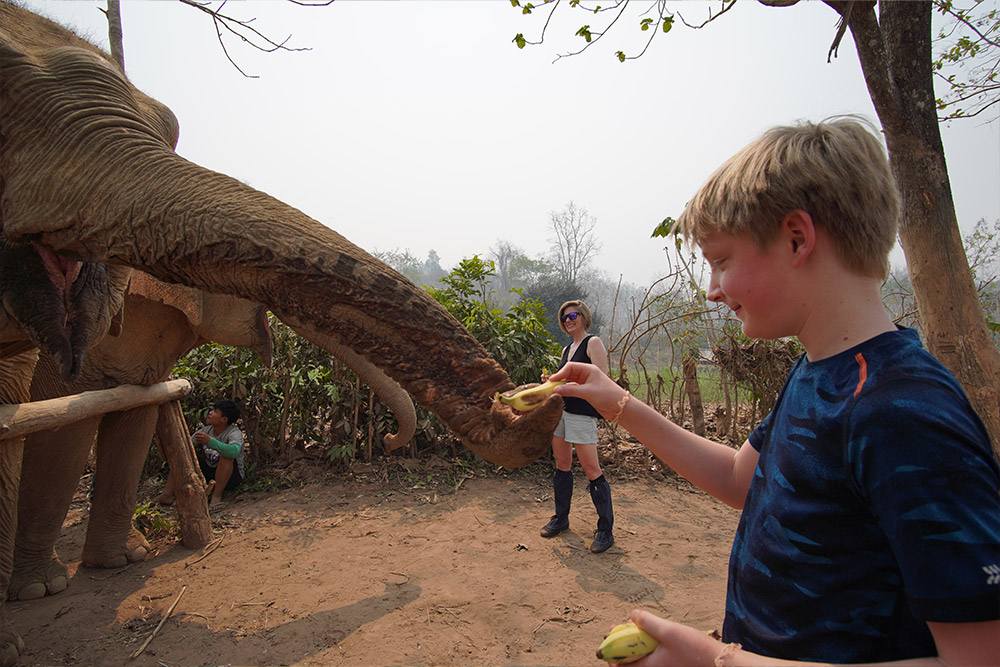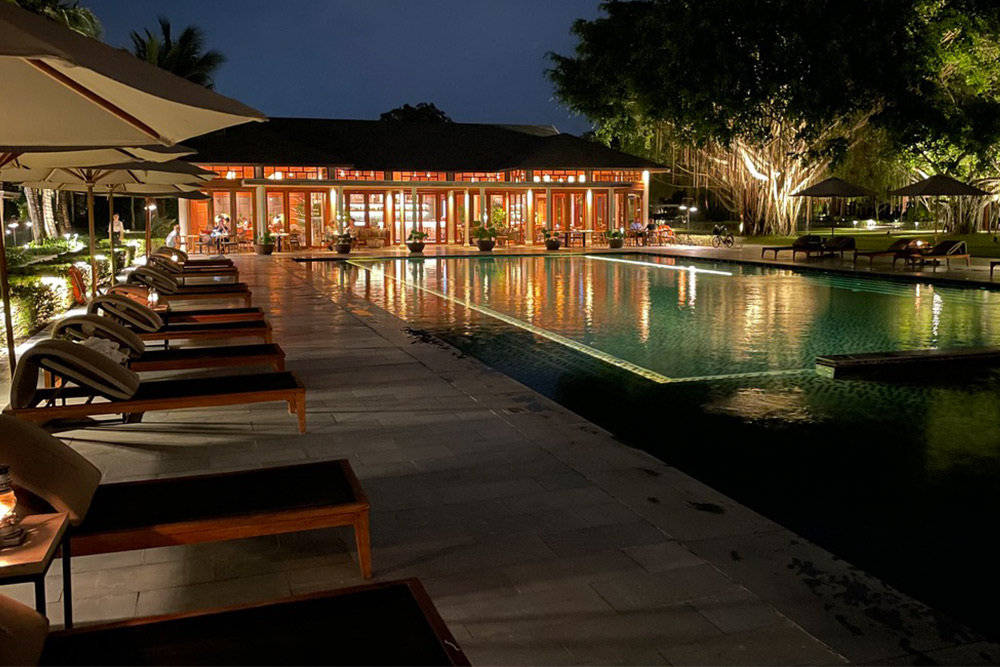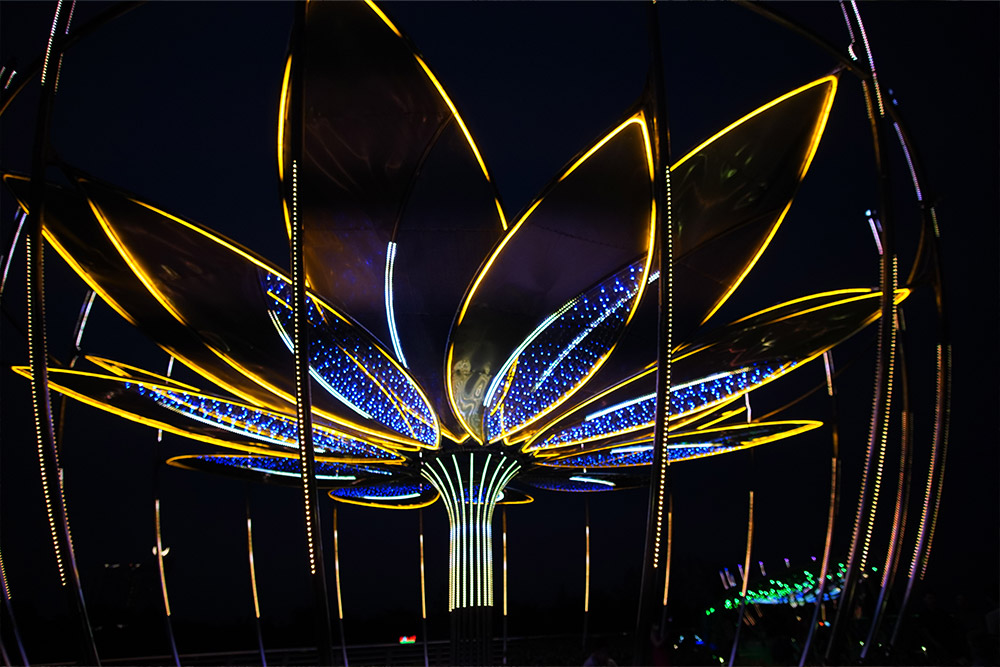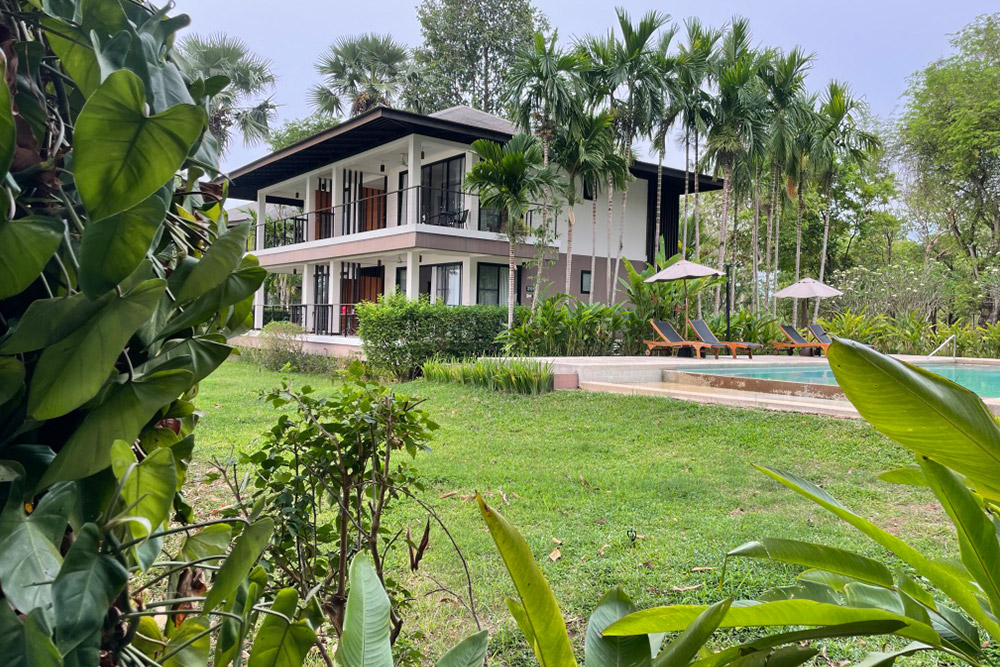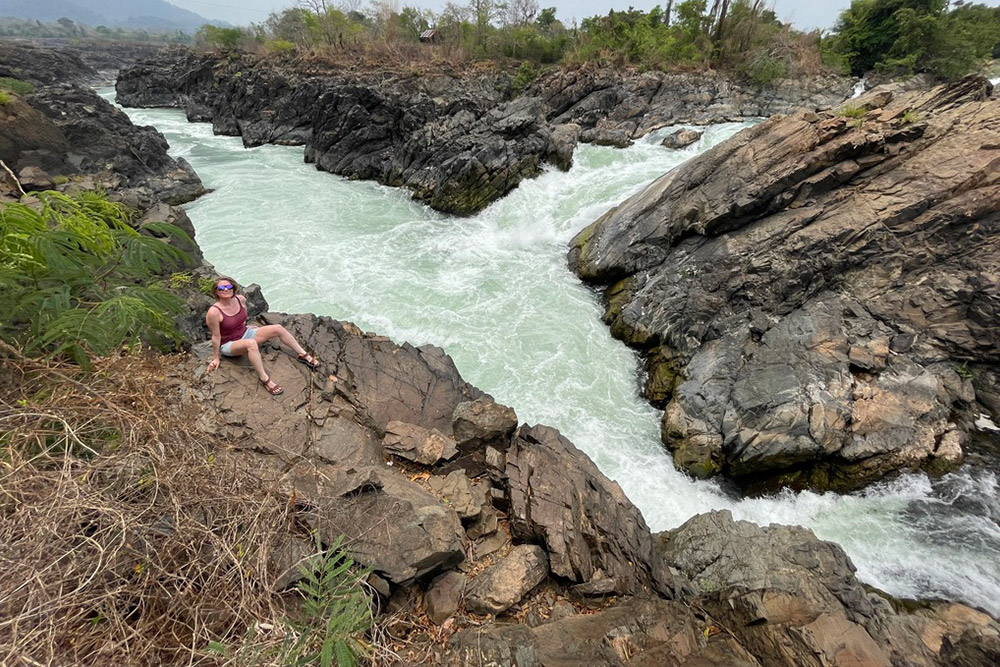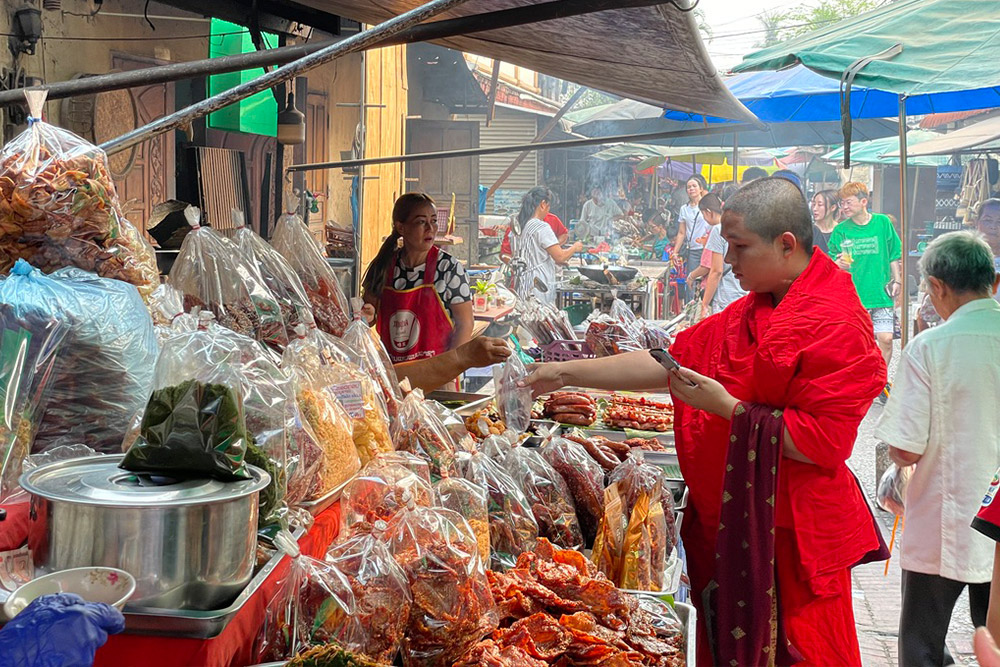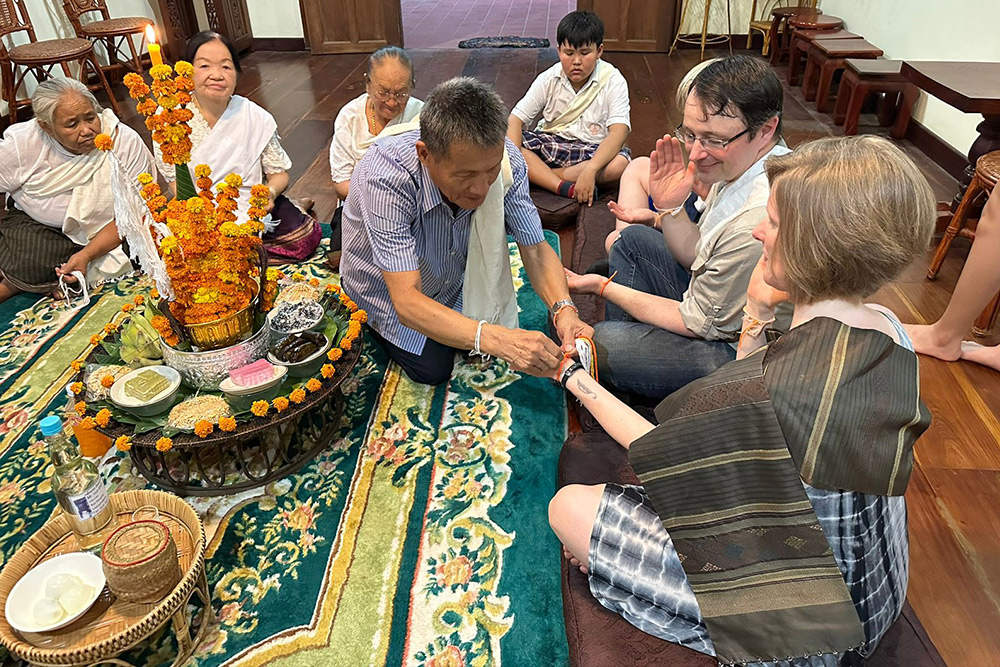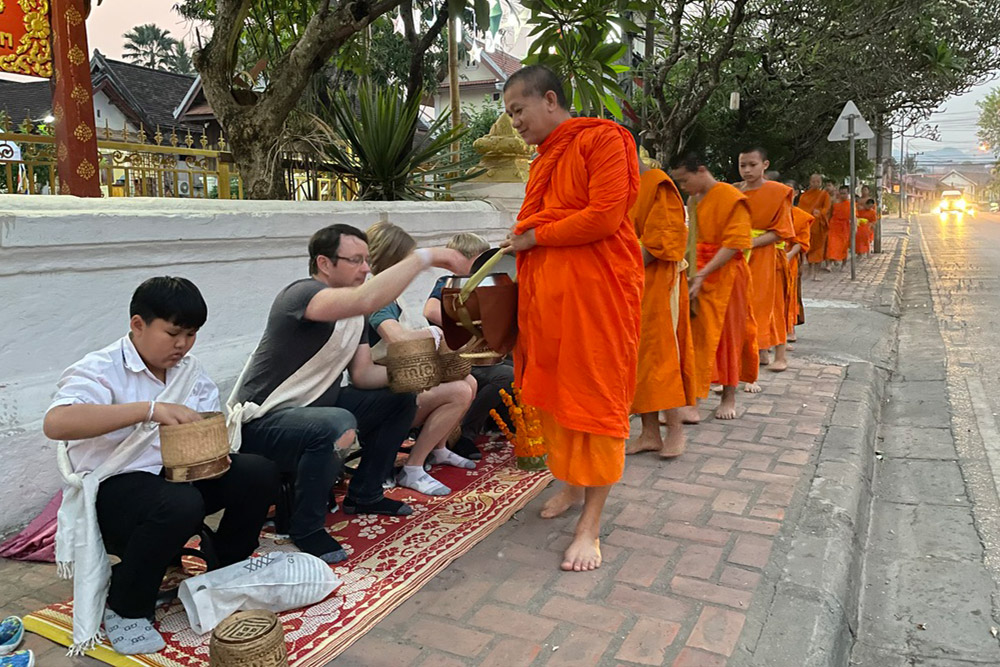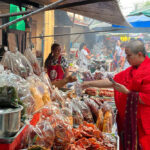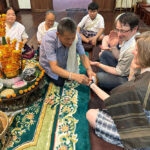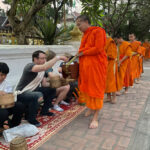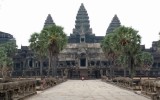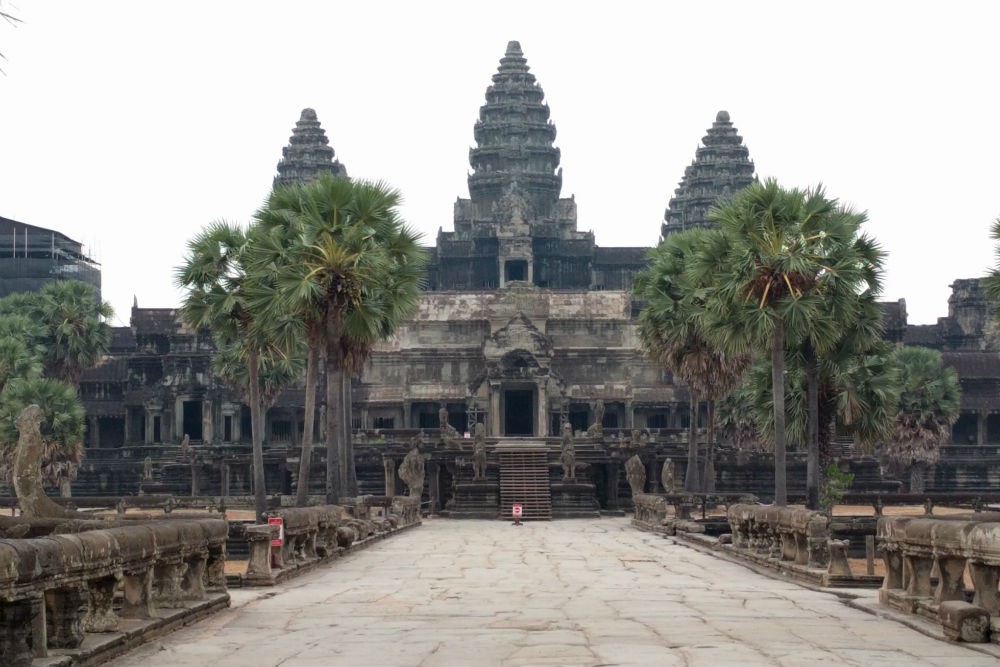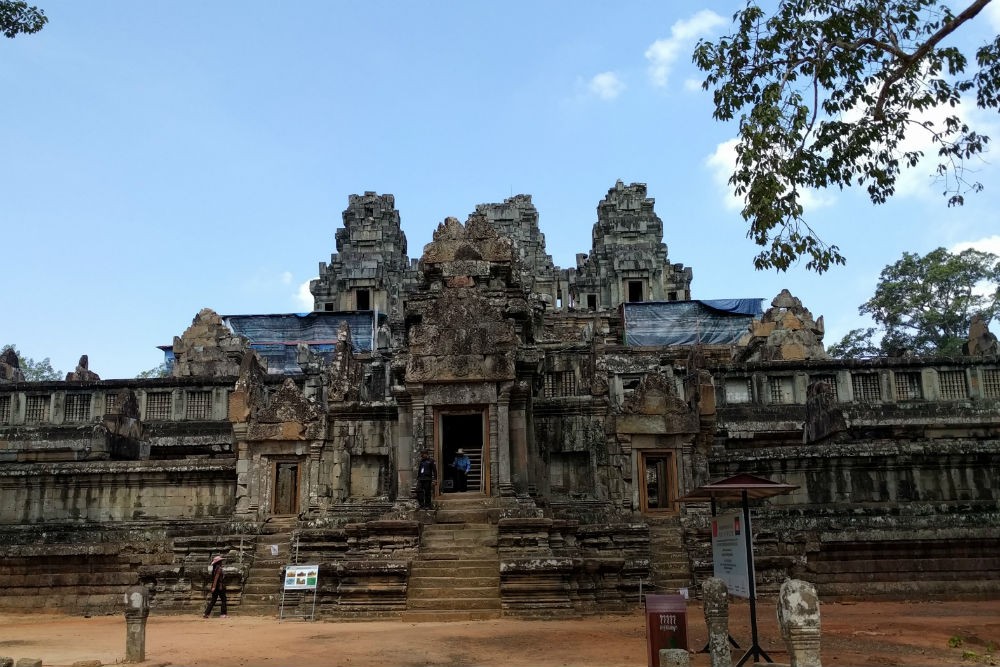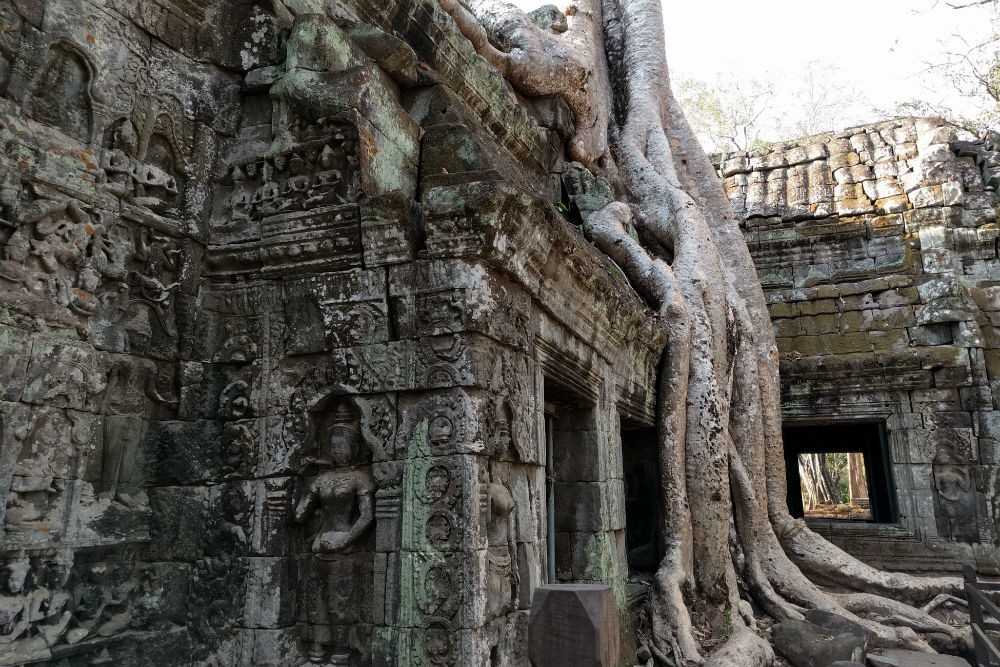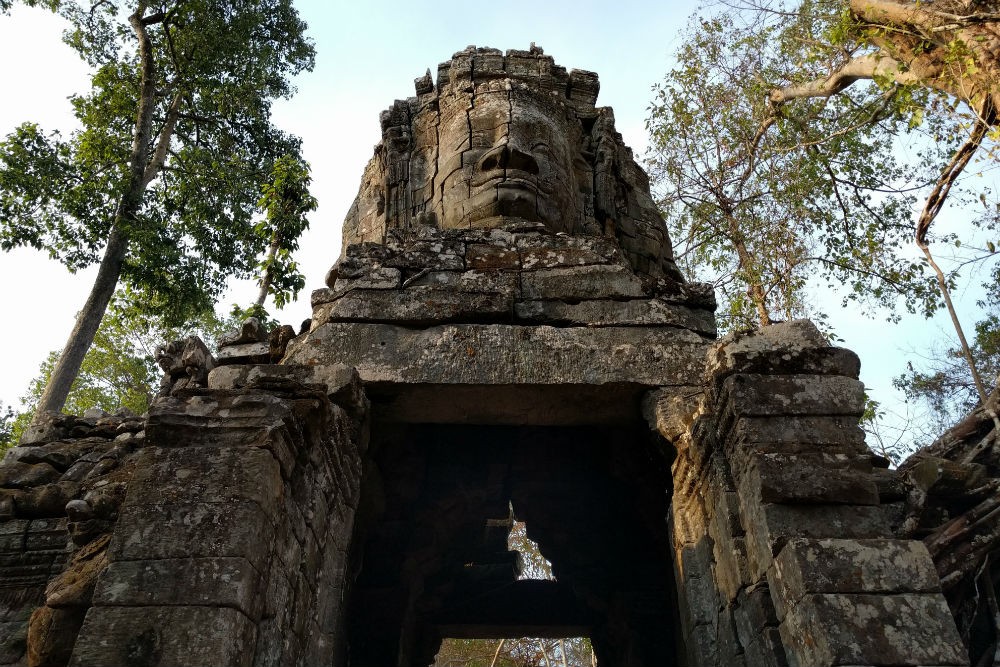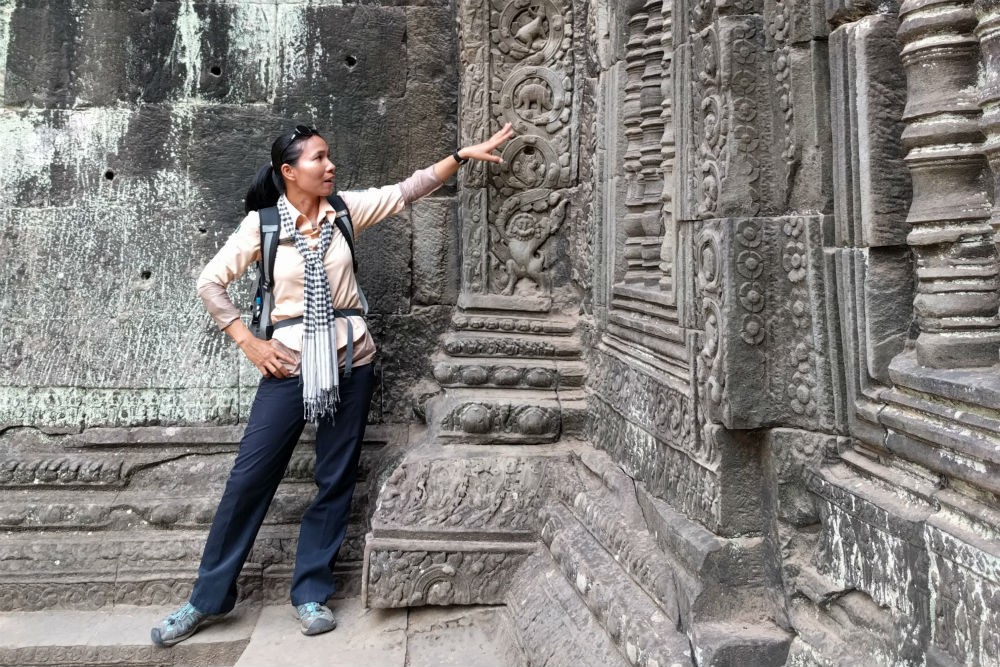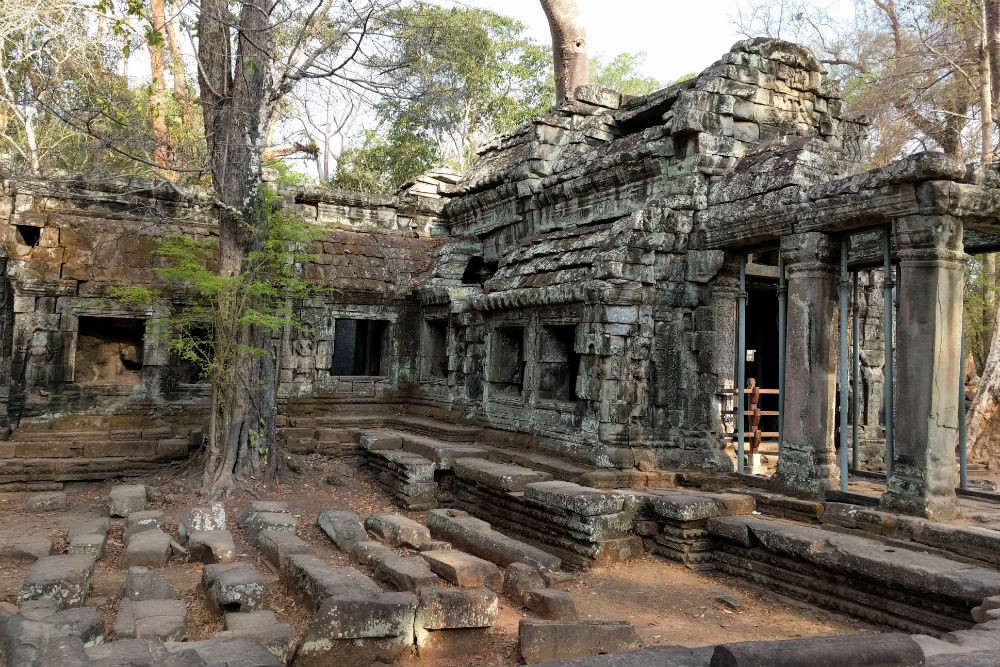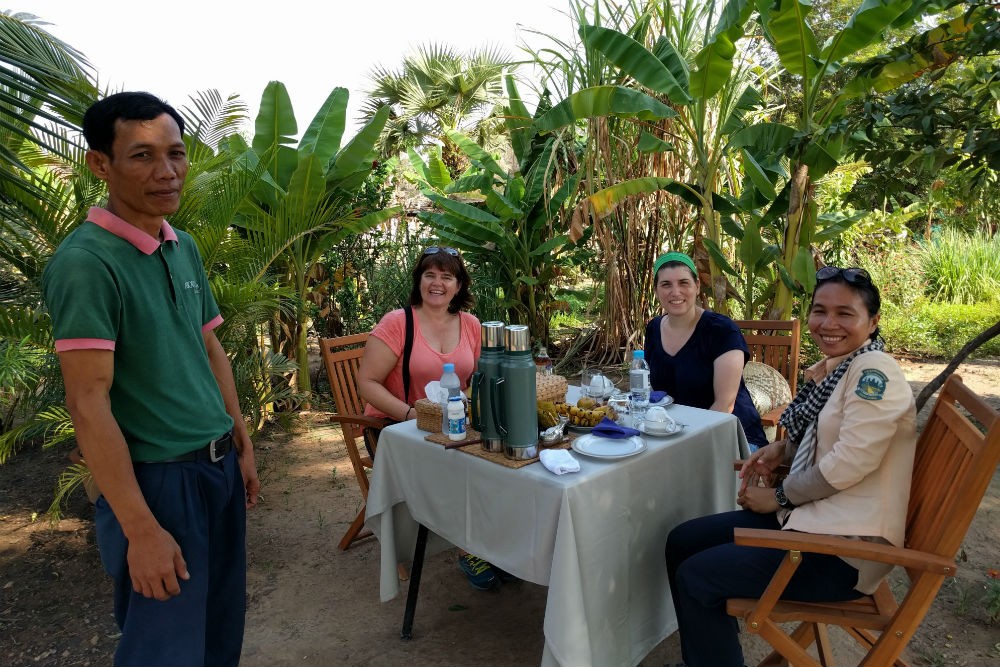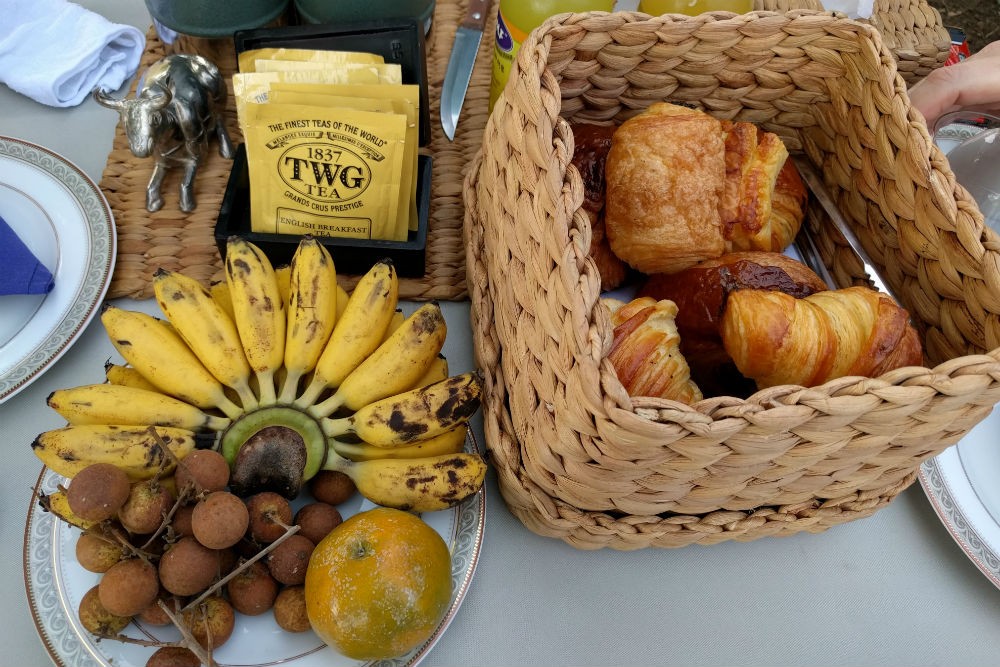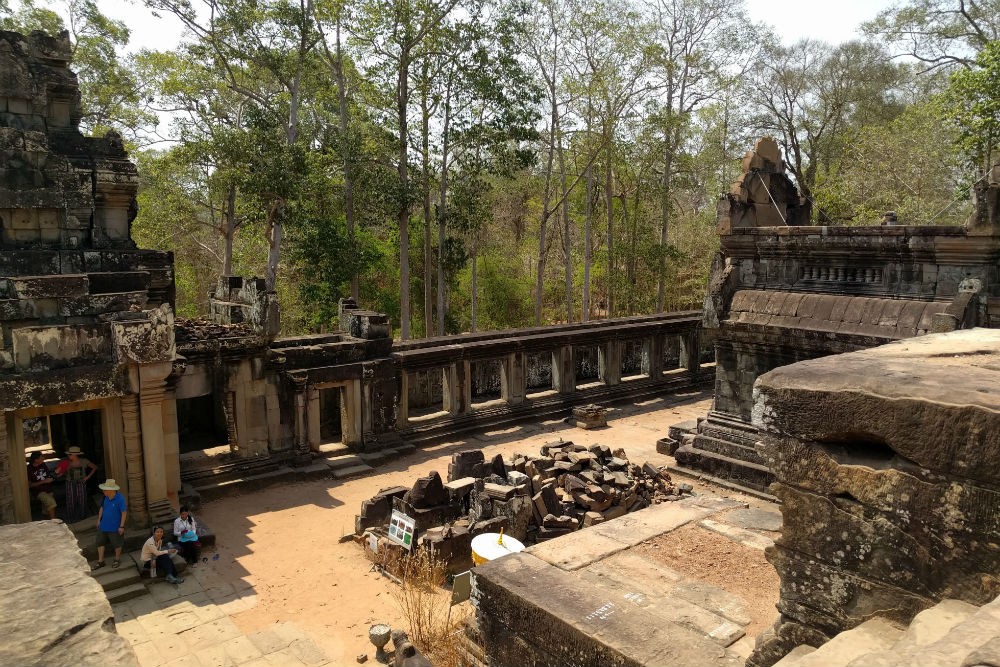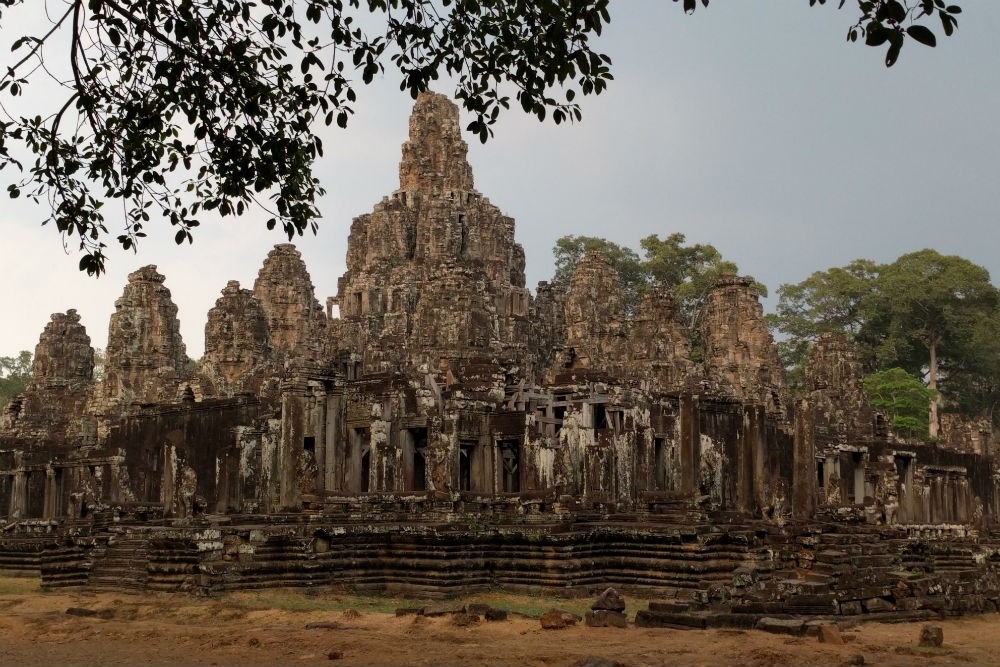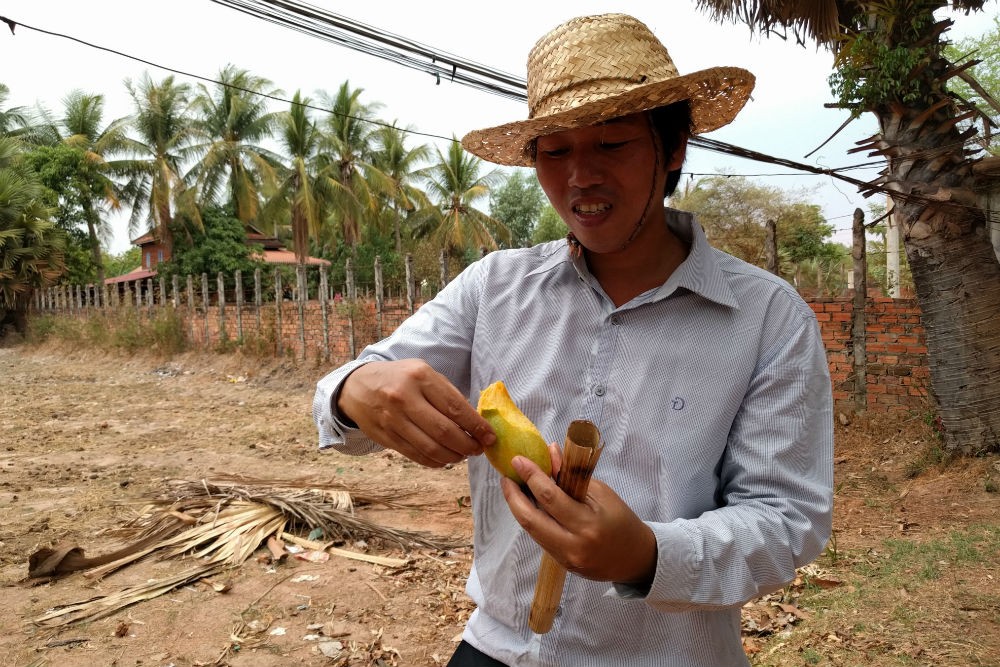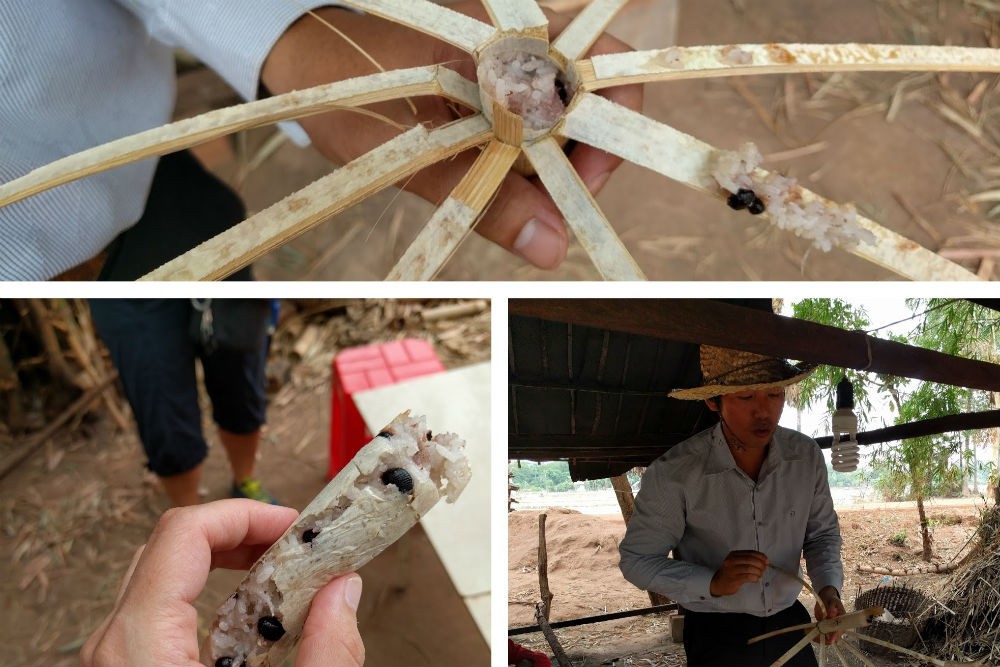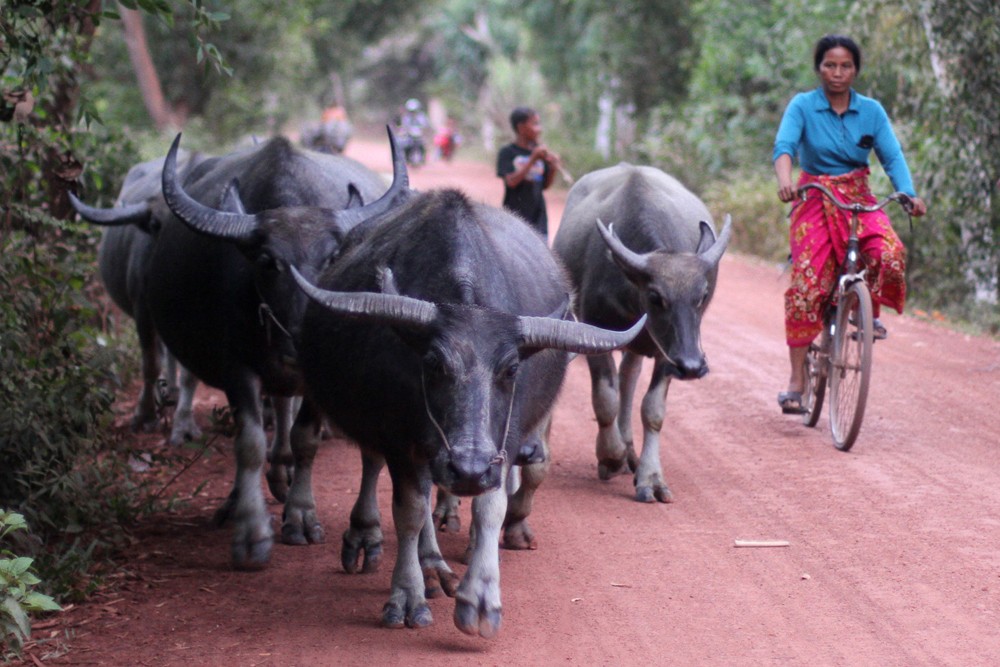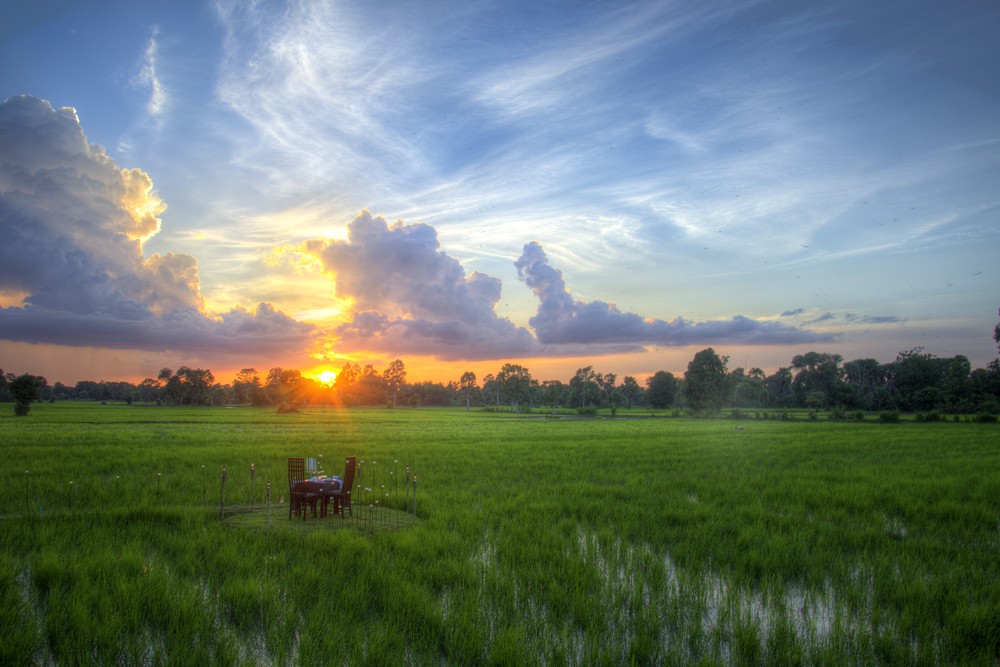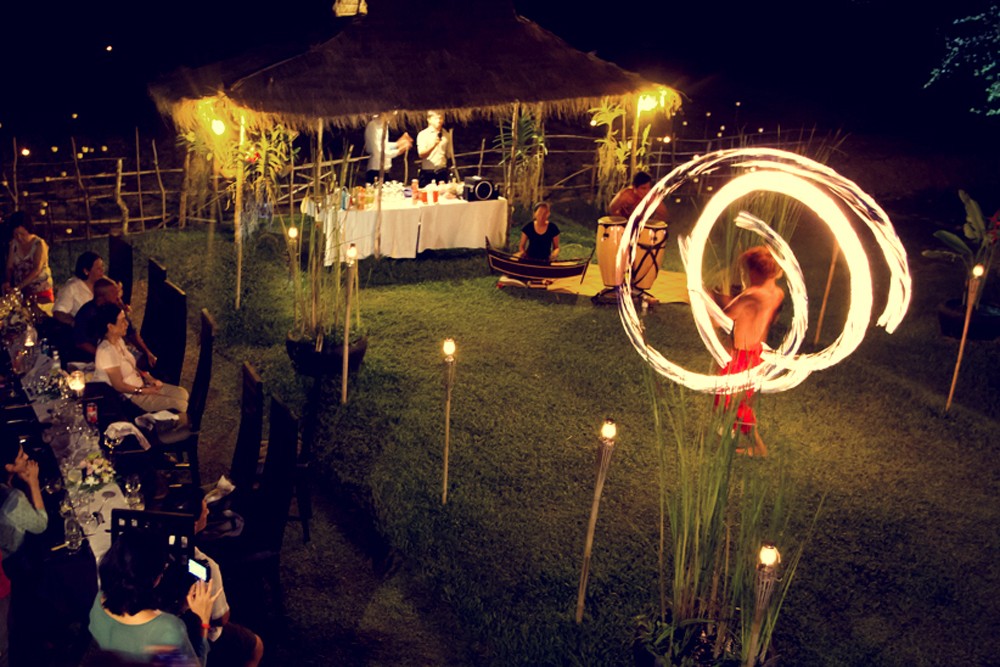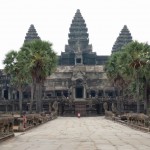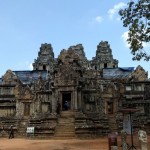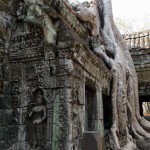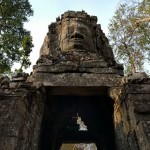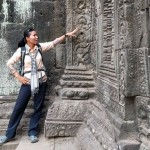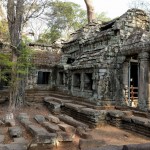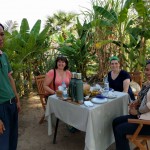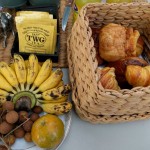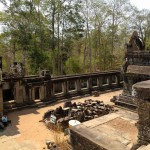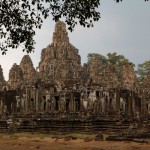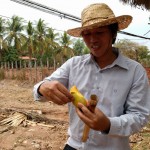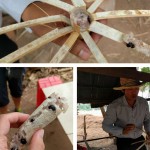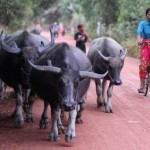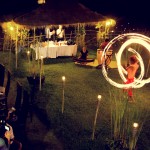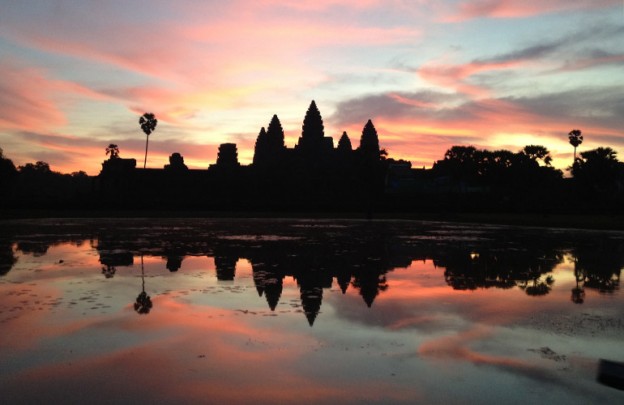UPDATE on March 28, 2025: A major earthquake struck Myanmar today and was felt in parts of Thailand and Vietnam. Our Southeast Asia WOW List experts are monitoring each of our travelers’ trips to make sure everyone remains safe.
The internet is abuzz about Season 3 of The White Lotus. As with the past seasons that spotlit Maui and Sicily, the show is transporting its viewers, this time to Thailand. Above I’m with WOW List Thailand expert Dan Fraser, who helped White Lotus creator Mike White scout locations in Bangkok, where Dan lives.
Given that “set-jetting” is now a documented phenomenon that inspires people to travel to a favorite TV or movie location—and, in Sicily and Maui, the “White Lotus effect” drew masses of travelers, sending hotel rates skyward—you may be thinking this isn’t the year to visit Thailand, right? Wrong. The White Lotus fans who are just now thinking about following the show to Bangkok, Koh Samui, and Phuket tend to be planning trips for Southeast Asia’s high season, which starts in November. They may not realize how wonderful Thailand—along with other parts of Southeast Asia that you can easily combine with it—can be in the low-season months of June and July. Yes, there will be a bit of rain, though the real downpours don’t arrive until late August and September, but in return you get gorgeously green landscapes, no smog, far fewer crowds, and considerably lower hotel rates. These months also bring great beach weather to the islands in the Gulf of Thailand, including Samui, as well as the coast of central Vietnam.
Whether you want to seize the opportunity to see Thailand and other parts of Southeast Asia in their quieter months or you have no choice but to wait till peak season, a savvy itinerary designer (like Dan) can keep you away from the crowds, maximize your trip logistics, and ensure you get the best value for your dollar. Read on to find out what your fellow travelers are up to in Thailand and Southeast Asia; for help planning your own trip, ask us via the red button below.
“We drifted through floating markets, visited old towns, ate local foods, played with elephants…”
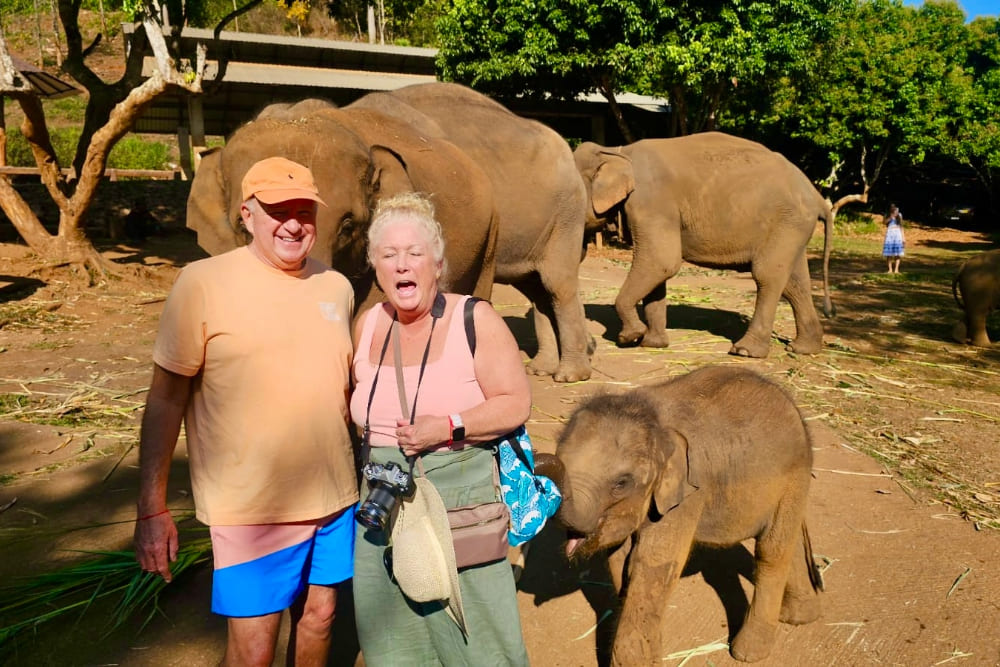
Travelers Ted and Kathie Embacher, surprised by a wandering trunk.
“We just returned from a wonderful adventure planned by Dan and Raphael. Everything was executed flawlessly. Although our schedule was jam-packed, there is not one thing that we wish we had left out.
We had one amazing experience after another as we viewed the beautiful wats, drifted through floating markets, visited old towns, ate local foods, played with elephants, walked through the large local markets and kayaked through caves into surreal lagoons.
Our guides were knowledgeable, friendly and prompt. Mr. Yo saved Kathie’s life in Bangkok when her long skirt got caught in an escalator and he was well prepared with a pair of scissors to cut her out. Tiger executed our WOW Moment in Cambodia and made it so special. I’m not easily overwhelmed, but our dinner on a beautiful wooden boat while cruising slowly through the floating villages on Tonlé Sap created a lifelong warm memory. And NaNa in Phuket took us to the best small places where we ate Thai food that we never knew existed and tasted fantastic, including a small stall that had a Michelin mention!
Thailand and Cambodia are beautiful countries and the people are among the kindest we’ve encountered, and Dan’s group are the folks to take you there. Our trip created lifelong memories (not that we’ll need memories, with the 1,500 photos that I took).” —Ted Embacher
Read more reviews of Southeast Asia trips. To get your own WOW trip, start with our trip questionnaire, reached via the black button below.
“We’ve watched Anthony Bourdain travel segments and commented on how it would be cool to have such unique experiences like he did. This trip was filled with them…”
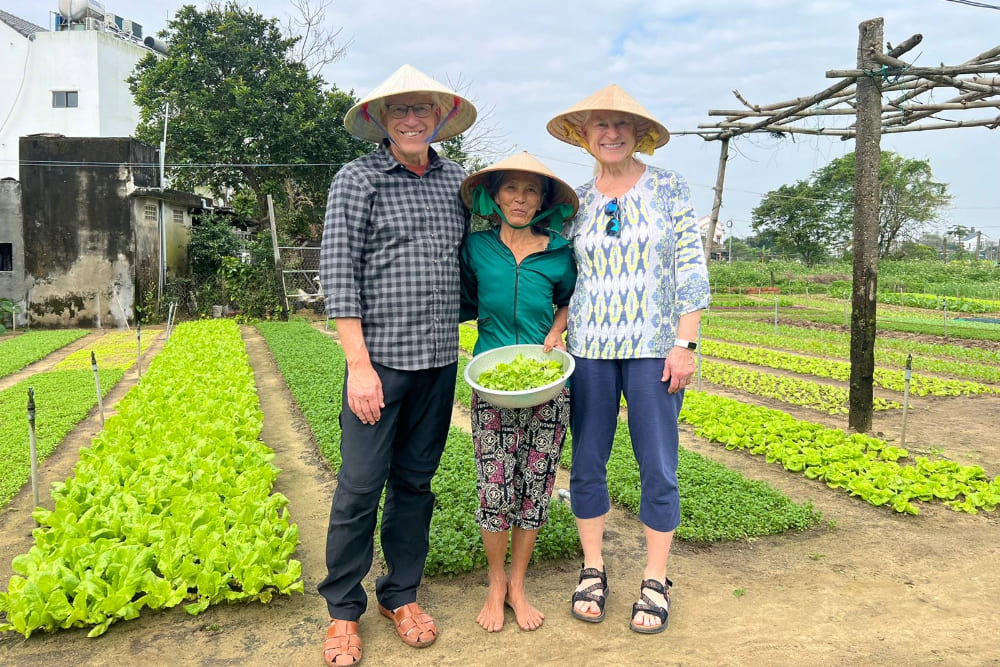
Travelers Chris and Lisa Wollan worked alongside an organic farmer near Hoi An in Vietnam.
“Our 22-day trip was truly a once-in-a-lifetime adventure! We worked with Ethan. We’ve traveled a fair amount and have done lots of planning but have never had such a seamless trip. From being met at airports, getting our visa in Cambodia, transfers between hotels, cars, tuk tuks, meals, entrance into sights, being flexible and accommodating us when we had a request, all went without a visual hitch. We know this took TONS of planning beforehand and lots of coordination by our planners, guides, drivers, etc.
We saw the typical tourist sights (which were amazing), but also were given access to behind-the-scenes experiences that we couldn’t have done on our own. We’ve watched Anthony Bourdain travel segments and commented on how it would be cool to have such unique experiences like he did. This trip was filled with them, from meeting an organic farmer and working on her farm, to getting a glimpse into the life of the floating villagers near Tonlé Sap, to morning meditation with monks. Coming out from watching the sunrise at Angkor Wat, we had a table set with china in a field for breakfast. Nearby three local kids were singing happy birthday to us and giggling.
Our wish and goal for our trip was to get a deeper understanding of the countries we visited, their history and the lives of the people who live there. We came away with that and much more.” —Lisa Wollan
Read more reviews of Southeast Asia trips. To get your own WOW trip, start with our trip questionnaire, reached via the black button below.
“We have been home only two weeks and have already started planning our next trip to Southeast Asia…”
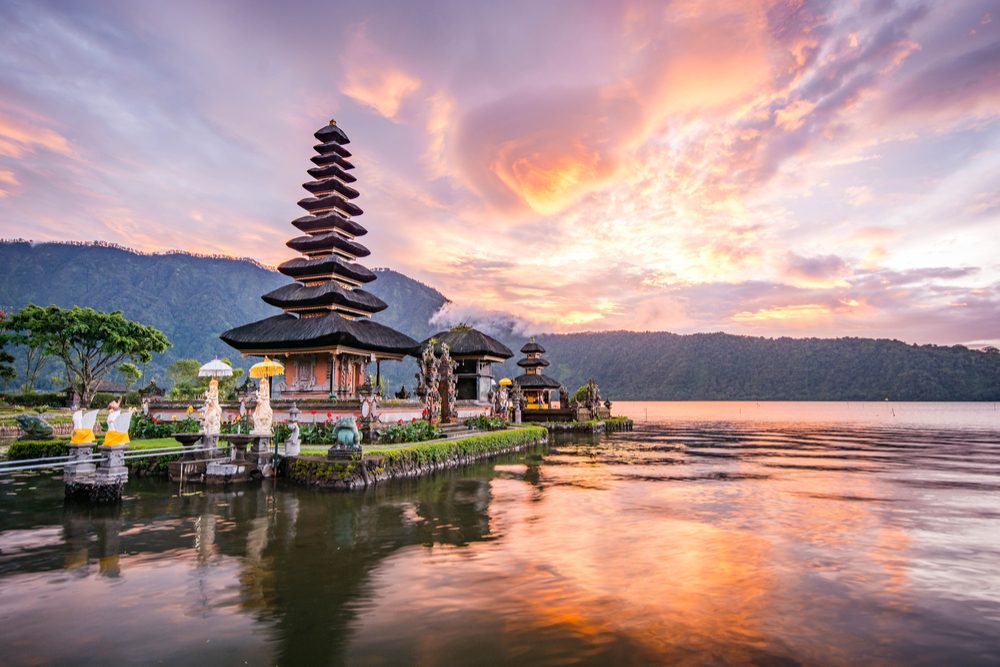
Pura Ulun Danu Bratan, a Hindu temple on Lake Beratan, Bali. Photo: Shutterstock
“We had a wonderful trip, and are so pleased with Andrea! We particularly loved the liveaboard dive boat he recommended. The trip was to Raja Ampat, a bucket-list destination for us, and the level of service on the boat was outstanding.
We loved our time on land in Bali, Singapore, and Thailand as well. We enjoyed our excursions, with favorites being the waterfall purification in Bali and the elephant feeding/bathing in Thailand. We appreciated the WhatsApp group Andrea set up in each country, including our guides and Andrea’s team; we felt comfort knowing we could contact someone for assistance at any time. Perhaps the best feedback we can give is that we have been home only two weeks and have already started planning our next trip to Southeast Asia with Andrea!” —Laird Broadfield
Read more reviews of Asia trips. To get your own WOW trip, start with our trip questionnaire, reached via the black button below.
“The best part of this trip was how personal it felt…”
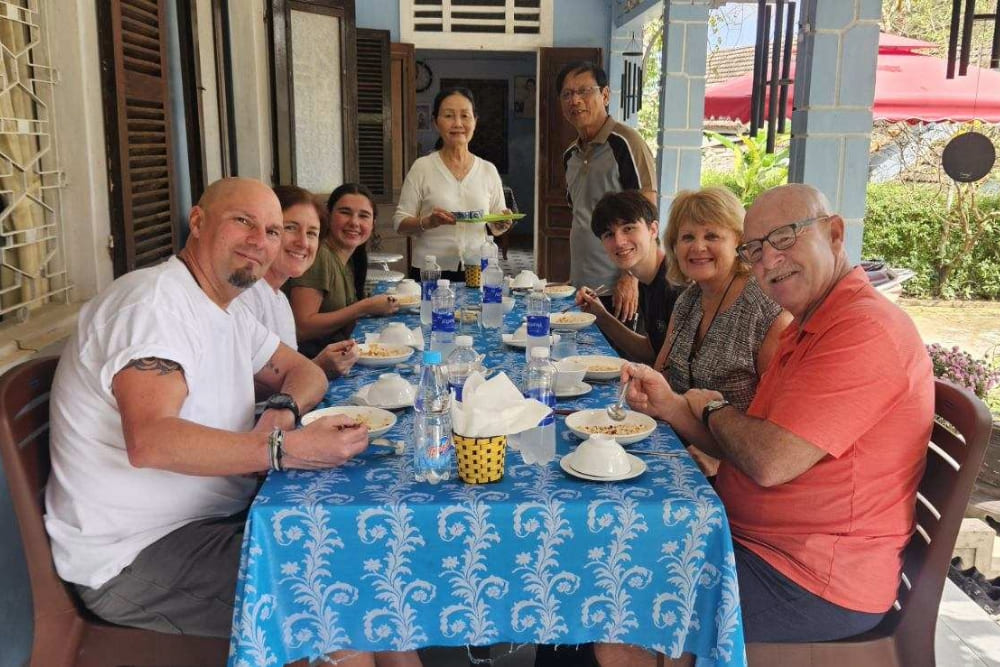
Traveler Amy Johnston and family enjoying a lunch they helped prepare with a family in Hue.
“We recently enjoyed an amazing trip to Vietnam and Cambodia, planned by Ethan and Sandy, and couldn’t be happier with how it turned out. My husband and I traveled with our two children, 13 and 17, and my parents. Everything was fantastic, including the guides, hotels, and activities that were planned each day.
We would have limited time due to traveling during a school break, and worked with Ethan to maximize what we could see in each location. We were able to hit all the highlights, and much more. Some favorite activities included the Vespa tour in Saigon, lunch with a family in Hue, wandering the streets of Hoi An, and a visit with many small craftspeople during a village day and amazing dinner in Cambodia. We were able to see Angkor Wat, the Mekong Delta, and find time to taste an amazing amount of local food.
The best part of this trip was how personal it felt. We met local families and had lunch at their homes, once in the Mekong Delta and again in Hue. We were able to meet with a monk in Siem Riep, took a morning meditation class, and learned to better understand the Buddhist religion. While we expected to love the big sites like Angkor Wat, it was really the personal feel and meeting local people that made the trip special.” —Amy Johnston
Read more reviews of Southeast Asia trips. To get your own WOW trip, start with our trip questionnaire, reached via the black button below.
“We weren’t sure what to expect with the flexibility built into the itinerary, but the spontaneity clearly enriched our trip…”
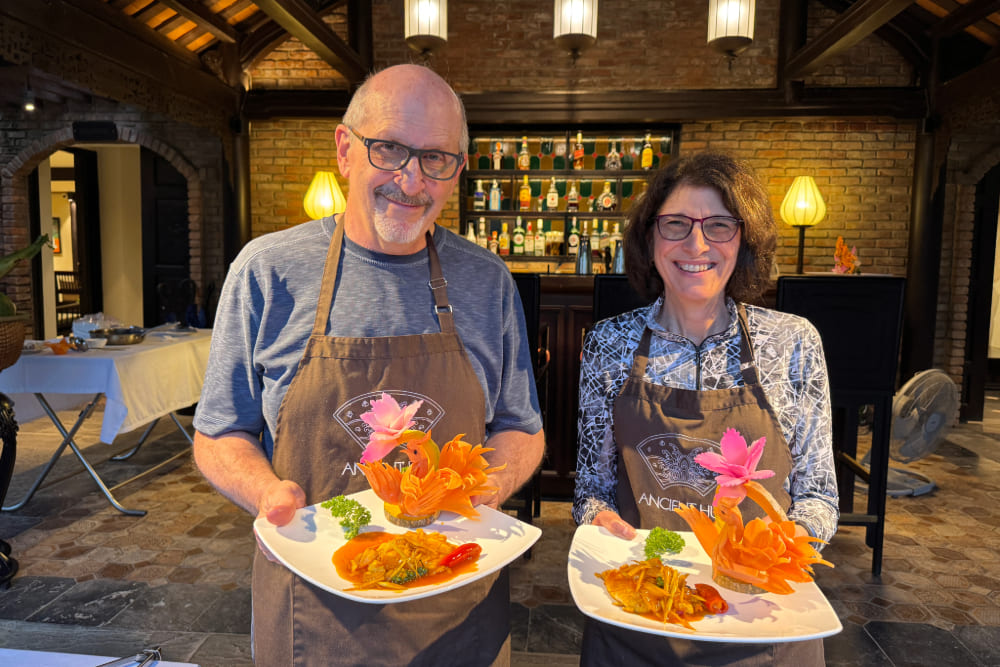
Travelers Carol Zuckerman and Barry Goldstein at a private cooking class in Vietnam.
“We just returned from nearly three weeks in Vietnam. Sandy and Ethan were indispensable through the planning of our itinerary, choice of wonderful local hosts, and flexibility so that our days were seamless and stress-free.
Unfortunately, the weather was rainier than expected, so we had to pivot from the plan some days. Rather than hiking in Ba Vì in the rain, our guide Trang took us to a yogurt manufacturing shop, then arranged a visit to a village with lunch in a historic home. In Huế, our guide Ngoc suggested a rickshaw ride and arranged a visit to a calligrapher’s home where we were able to try the art; we loved our private cooking class at a hotel restaurant. Ngoc also was instrumental in pointing us to the right tailor for sport coats to be made in a day in Hội An. In Can Tho, when we asked our local host Sue An to recommend a restaurant where locals go, she pointed out a place and was kind enough to come order for us. The impromptu visit she planned to a cacao farm, with a tour by the owner, also was a real treat. And in Saigon, the Củ Chi tunnels, which we reached by speedboat on the Saigon River, and the evening Vespa food tour were some of the trip’s most memorable highlights.
We highly recommend experiencing Vietnam with the assistance of Sandy and Ethan. We weren’t sure what to expect with the flexibility built into the itinerary, but the spontaneity it allowed clearly enriched our trip. It allowed us to visit art galleries, an herbal medicine museum, and several markets on the last-minute recommendations of our local hosts, or just because we passed by a place that seemed interesting.” —Carol Zuckerman and Barry Goldstein
Read more reviews of Southeast Asia trips. To get your own WOW trip, start with our trip questionnaire, reached via the black button below.
“We arrived home feeling that we’d seen and done everything we’d hoped for and more…”
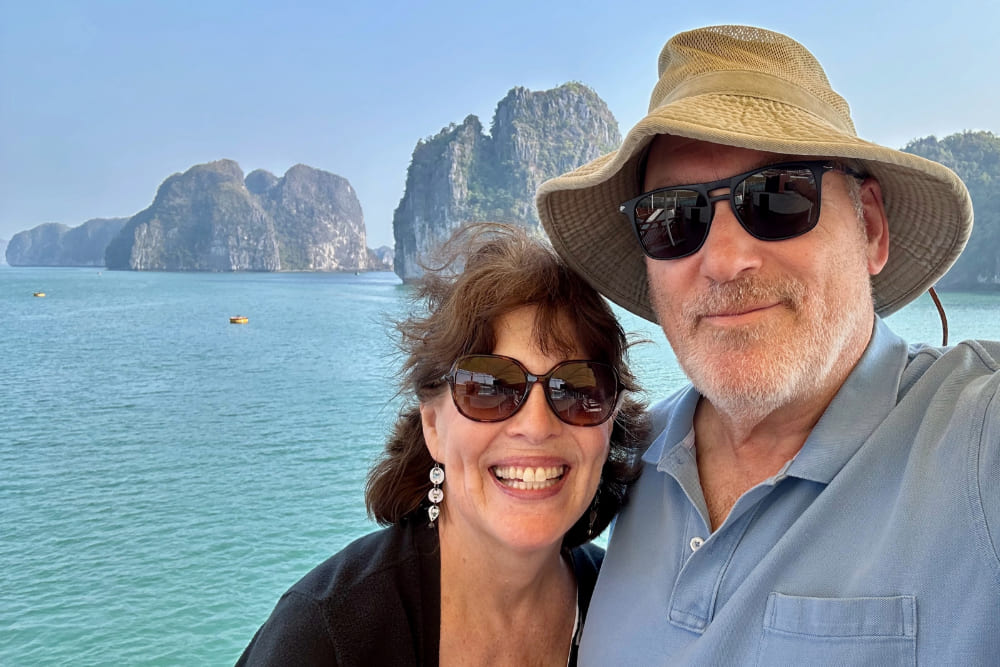
Barbara and David Katz relaxing on a Halong Bay cruise after vigorous days of sightseeing. Photo: Traveler David Katz
“We’re experienced travelers, recently back from an amazing trip to Southeast Asia, beautifully arranged by Ethan who worked with us closely every step of the way. We wanted to cover the highlights of four countries—Thailand, Laos, Vietnam and Cambodia—independently and with opportunities to meet people who live and work where we’d visit, to walk and hike through beautiful landscapes, see wildlife, and eat delicious food, in roughly three weeks at a reasonably easy-going pace. Impossible, right?
Somehow, Ethan was able to put it all together for us, enlisting a network of charming, veteran guides at every stop who whisked us through transfers, knew exactly when and where to arrive at every point of interest and activity for immersive experiences without long waits or crowds, and provided uniquely personal experiences through their extensive local contacts. Our guides became friends and seemed to know instinctively exactly when we’d be hungry and when we needed to rest all along the way. Accommodations were exactly what we love when we travel—smaller, boutique-type hotels, locally owned, perfectly located, inviting, comfortable, restful—and within our budget.
Highlights from an unforgettable trip: A fascinating private conversation with a young Buddhist monk at beautiful mountain top monastery; quiet walks among temples shining in the light of a full moon; hikes—to a stunning waterfall near a moon bear rescue, up countless steps to breathtaking views of mountains, rivers and rice paddies (multiple massive steps seem to be a Southeast Asian thing!); walking through the jungle with rescued elephants roaming free; rowing, paddling and cruising Vietnam’s mysteriously beautiful bays, lakes and rivers, where we learned how to properly cast a fishing net and enjoyed a delicious lunch of fresh fish and vegetables on board a small boat; navigating the bright, bustling streets of Hanoi, Saigon and Bangkok (festooned for the upcoming Lunar New Year) while sampling local dishes and treats; visiting the home of retired teachers who served us tea, played traditional instruments, and allowed me, a singer, to try my hand at a tranh while singing solfeggio with our hostess; a ceremony celebrating the full moon with song and dance at the home of one of our guides along with his extended family; a candlelit dinner for two at sunset and under the stars at a beautiful remote location—transported there by ox cart; and sunrise—incredibly, away from the crowds—at Angkor Wat.
We arrived home feeling that we’d seen and done everything we’d hoped for and more.” —David and Barbara Katz
Read more reviews of Southeast Asia trips. To get your own WOW trip, start with our trip questionnaire, reached via the black button below.
Be a smarter traveler: Sign up for Wendy’s weekly newsletter to stay in the know. Read real travelers’ reviews, then use the black CONTACT buttons on Wendy’s WOW List to reach out to the right local fixer for your trip.

